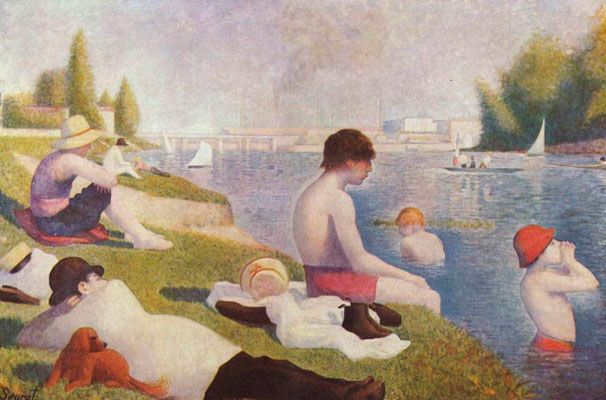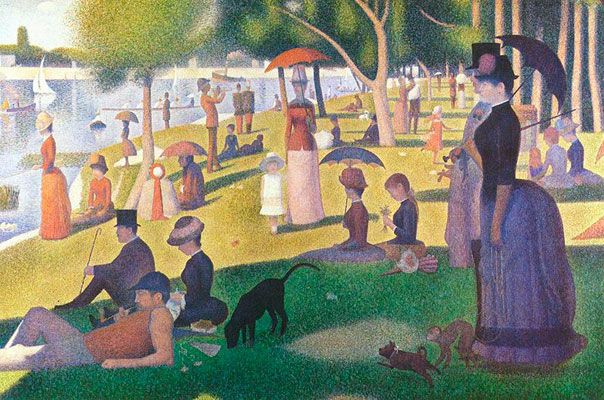December 2, 2021, marks Georges Seurat’s 162nd birthday. Georges Seurat is a French draftsman and painter. He is always remembered as the pioneer of Neo-impressionist technique called Pointillism. Google even celebrated his birthday by creating a doodle that shows colorful dots animation of Seurat’s painting Sunday Afternoon on the Island of La Grande Jatte.
Pointillism is a painting approach that applies soft tiny dots pigments that allow the viewer’s eye to blend colors optically. Usually, in other painters’ works, the colors blended on the canvas or pre-blended as a material pigment.
Seurat’s innovation of Pointillism was inspired by new quasi-scientific theories about color, expression, and optical physics. For him, particular lines and colors could bring different expressive effects. He also found that contrasting colors can optically mix and produce more vivid tones than by mixing paint alone. Seurat called this technique “chromo-luminarism”, or later known as Pointillism or Divisionism.

Georges Seurat, Bathers at Asnières (1884) https://www.theartstory.org/
Seurat painted his figures in monumental classicism, to depict urban leisure of the bourgeois and the working class. Bathers at Asnières (1884) is a perfect example of his attempt that combines classicism with modern, and quasi-scientific approaches of color. This painting portrays some people enjoying their recreation time in the Seine Riverbank. At the distance, factory smoke is billowing. The typical impressionist’ brightness colors make this painting is so soothing. Seurat represents a modern ironic scenery by contrasting the working class’ leisure activity and industrialization.

Georges Seurat, A Sunday Afternoon on the Island of La Grande Jatte (1884-86)
Seurat’s most famous painting about the leisure time of Paris society is A Sunday Afternoon on the Island of La Grande Jatte (1884-86). It depicts some middle-class Parisian enjoying a Sunday afternoon on an island in the Seine River. They sit in the small group or just stand gazing at the natural beauty. They gather in a certain proximity to each other. This painting suggests a portrait of leisure time in modernity, in which each person or group keeps a distance from one another.
In this work, Seurat was also inspired by Greek classical art, especially the Panathenaeans of Phidias. Seurat would like to make modern people in their essential traits, portray what they do on those friezes, and place them on canvas in harmonious colors. Some interpret his classical figures and the static effect of the poses give criticism to the artificiality and boredom of modern society and middle-class life.
Georges Seurat’s works are awe-inspiring and have a significant impact on the next painter generations. Seurat’s neo-impressionist technique of Pointillism paves the way to further explorations of color, including abstract art. His dynamic and expressiveness also inspired later Surrealist artworks.
